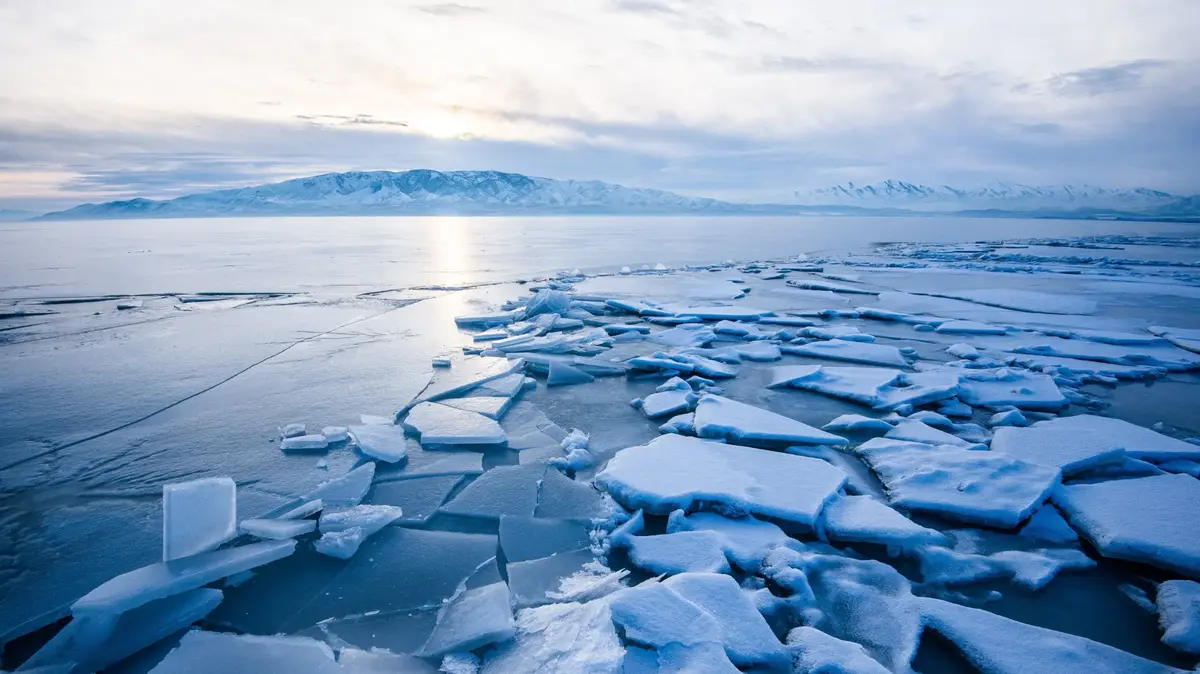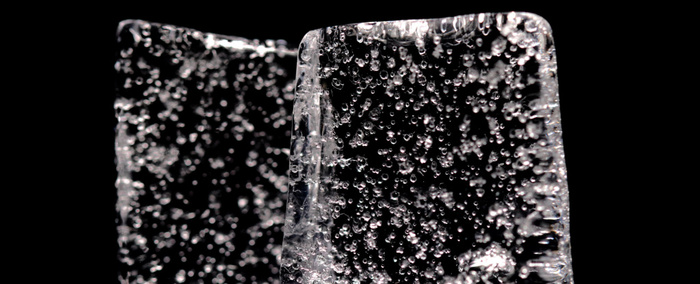Icon: enlarge
Glacier on King George Island in Antarctica
Photo: Alessandro Dahan / Getty Images
"All of a sudden," says Ricarda Winkelmann, "it got dark in front of the cabin window."
That was in December 2010, the German research icebreaker "Polarstern" had just reached the edge of the ice shelf in the Atka Bay in Antarctica.
The "ANT-XXVII / 2" expedition moored there to supply the "Neumayer III" research station.
It was the first time that the young researcher saw the southern continent with her own eyes.
After long maneuvering, the crew had found a spot where the ice only protruded 20 meters from the water, where personnel and supplies could be dropped off.
"If you consider that only a tenth of the ice shelf can be seen above the water level, you get an idea of the dimensions of the Antarctic," says Winkelmann.
A small part of the ice of the Antarctic floats as an ice shelf on the ocean, the larger part lies in the interior of the continent as a package up to 4800 meters thick on solid ground - for more than 30 million years.
The ice of the southern continent stores more than half of the fresh water on earth.
If it thawed completely, the global sea level would rise by around 58 meters.
That would of course be a very long-term extreme scenario that - hopefully - will not materialize.
Icon: enlarge
Antarctic glacier on King George Island
Photo: Alessandro Dahan / Getty Images
Yet Antarctica could hold some surprises in store for humanity.
Together with colleagues, Winkelmann calculates in the specialist magazine "Science" how much the ice will melt with certain increases in temperature and contribute to the rise in sea levels.
"There are a number of self-reinforcing effects in the Antarctic," warns Winkelmann in an interview with SPIEGEL.
If the temperature increases by two degrees compared to pre-industrial times, the simulations suggest that larger parts of the West Antarctic ice sheet will collapse.
This is due to the warm water in the ocean, which attacks the ice shelf areas from below.
This also causes the glaciers on land to slide, which in turn increasingly transport large amounts of ice into the sea - where they in turn melt.
Accelerating processes
"The 2-degree scenario in particular shows how dramatically the sea level can rise with this warming," confirms Thomas Ronge from the Alfred Wegener Institute (AWI), who was not involved in the study.
"Two and a half meters of sea level rise due to the Antarctic alone is enormous."
With a plus of four degrees, marine areas in the east of the continent would also be affected by the loss of ice, warns Winkelmann.
In the long term, this would lead to a level increase of around 6.5 meters worldwide.
At six degrees of warming, the plus would be around 12 meters: At this point in time, there would be additional accelerating processes on the surface of the ice sheet.
So far, this effect is only known from Greenland, in the case of the Antarctic it has not yet been in the public eye.
In short, according to Winkelmann, a vicious circle would result: If the ice melted on the surface and got into lower layers, it would come into contact with warmer layers of air.
As the researcher describes it, you can also feel the effect when hiking in the mountains.
When you step down, it gets warmer and warmer.
This is also the case in Antarctica.
As the surface of the ice continues to sink, it melts even more - and so on.
The increase has increased tenfold since 2006
Winkelmann and her colleagues deliberately do not make any statements about how long the melting of a certain Antarctic region would take.
One thing is clear: even if the process may take many hundreds of years, we could achieve the corresponding amount of CO2 in the atmosphere that ultimately triggers this loss of ice in the near future.
One point is important to the researchers: "We show that at some point certain processes can no longer be reversed," says Winkelmann.
Once a tipping point has been reached, the ice melts inexorably.
"What we are losing from Antarctica now is lost forever," says co-author Anders Levermann.
Nevertheless, it is important how much greenhouse gas mankind still emits, explains his colleague Winkelmann.
"Ultimately, the further warming determines how quickly the sea level rises."
The Antarctic is currently raising the water level by around half a millimeter per year.
On the one hand, that doesn't seem like much.
On the other hand, the value has increased tenfold since 2006.
Meanwhile, the world is heading for the highest level of CO2 in the air in 3.3 million years.
The mark should be reached by the middle of the century.
In addition, a team led by Thomas Slater from the University of Leeds recently warned in the journal "Nature Climate Change" that the ice sheets in Greenland and Antarctica are currently losing as much ice as only the worst climate scenarios can predict.
Icon: The mirror



/cloudfront-eu-central-1.images.arcpublishing.com/prisa/DBT2OEOLXBGZTLYKDBM2FWSJNM.jpg)









